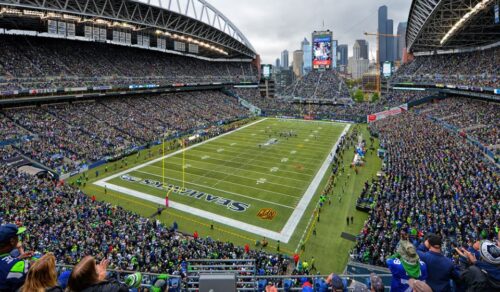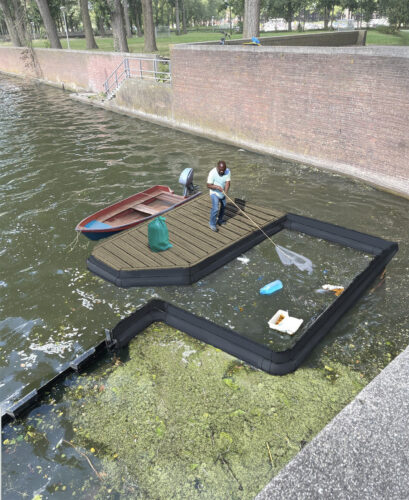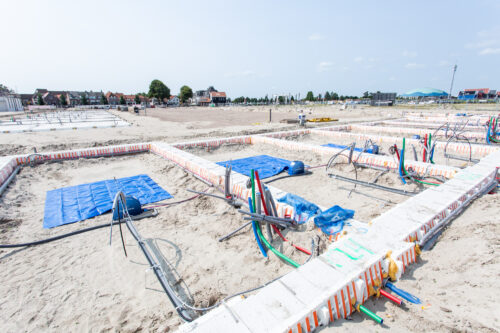News
20 May 2020
Municipality of Apeldoorn and Joosten pioneer with first growth site

The first Treebox in the Netherlands, 15 years later
The municipality’s question was: How can we allow a new tree, completely surrounded by concrete paving slabs, to grow into a healthy mature tree?
A tree needs several essential elements to thrive: space, water, nutrients, and oxygen. When paving extends right up to the tree trunk, the natural supply of water, nutrients, and oxygen is insufficient. The roots will seek out space on their own, but lacking water, nutrients, and oxygen, they tend to grow upward to find these themselves—often causing damage to the paving as a result.
Our green specialists, Geert-Jan Derksen and Pascal Otten, designed a growth site system using Joosten Jobiboxes as tree crates, which were installed around the tree. The boxes were filled with nutrient-rich tree soil and wrapped in a water-permeable geotextile. The tree crates were placed 10 centimeters apart to allow optimal root growth. A geogrid was laid over the crate system to ensure adequate load distribution. Beneath the crates, four gravel pillars were installed to drain excess water.

This first growth site construction created a defined space with sufficient nutrients for unrestricted root growth. A drainage pipe was installed throughout the entire system, which—through two inlets in the paving—delivers rainwater and oxygen directly to the tree’s roots.

The first growth site 15 years later
This spring, the schoolyard was renovated into a more natural environment, with the paving replaced by grass. For the Municipality of Apeldoorn, this was a great opportunity to evaluate 15 years of growth site improvements. Together with Peter Huis in ’t Veld from the municipality, Geert-Jan Derksen conducted an inspection of the schoolyard.
No root heaving was observed, and the tree itself already looked healthy early in the spring—an important sign in itself. Because part of the schoolyard was excavated, it was also possible to clearly see how the tree’s root system had developed.
No significant root growth was observed outside the crate system, indicating that there is still sufficient nutrient-rich soil after all these years. The roots growing outside the crates were likely searching for water. One of the drainage inlets had been covered in the past during the construction of a bicycle shelter, cutting off one of the two important rainwater supplies. With the introduction of grass around the tree, the water balance will naturally be restored, allowing the tree to thrive for many decades to come.

Development of Growth Site Constructions
The demand for more greenery in urban areas has increased significantly in recent years for several reasons. City residents seek more green spaces as a counterbalance to buildings and paving. Additionally, leisure activities have changed, creating a need for recreational areas within cities. Nature organizations and experts recognize that more urban greenery is essential to maintaining biodiversity. Governments, too, must comply with various national and international agreements to protect nature and take measures to combat global warming. For example, increased greenery in cities helps mitigate the Urban Heat Island effect.
As a result, the development of constructions and products aimed at improving growth sites has advanced rapidly. Joosten Kunststoffen has formed a partnership with the UK-based GreenBlue Urban to address this need. Founded in 1992, GreenBlue Urban (GBU) researches and provides solutions for enhancing growth sites in urban environments, with the goal of drastically improving the quality of urban greenery.
The GBU Stratacell system was one of the first “tree bunkers,” specifically designed to create a sustainable growth site for trees without compromising the stability of the underlying ground. This concept was further developed into the GBU RootSpace system in a subsequent innovation step. Despite its highly open structure that provides ample space for roots and nutrient-rich soil, this system offers high load-bearing capacity and flexible installation. RootSpace can be customized with additional systems for irrigation, water retention, and aeration to meet project-specific requirements.
The latest development involves disconnecting stormwater from the sewer system and linking it to a growth site. This enables rainwater to be collected and buffered within the growth site. During dry periods, this stored rainwater can be used to provide trees with extra water. Excess water can infiltrate into the soil beneath the growth site and recharge the groundwater. This way, rainwater ends up where it belongs, relieving pressure on sewer systems and water treatment facilities during heavy rainfall.
Meer nieuws

13 November 2025
Joosten is participating in the 2026 World Cup
Joosten has landed a special assignment: we are going to provide the perfect pitches for the 2026 Fo

12 November 2025
Rethinking the Shoreliner
For his graduation research at Wageningen University & Research, student Mike Cleintuar followed the

8 October 2025
JustNimbus: finalist for the Cobouw Innovation Award
Every year, the Cobouw Awards are presented. Their purpose is to reward inspiring frontrunners and s